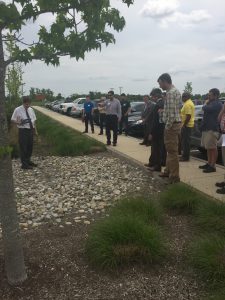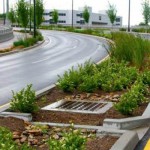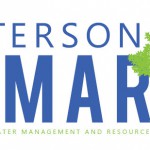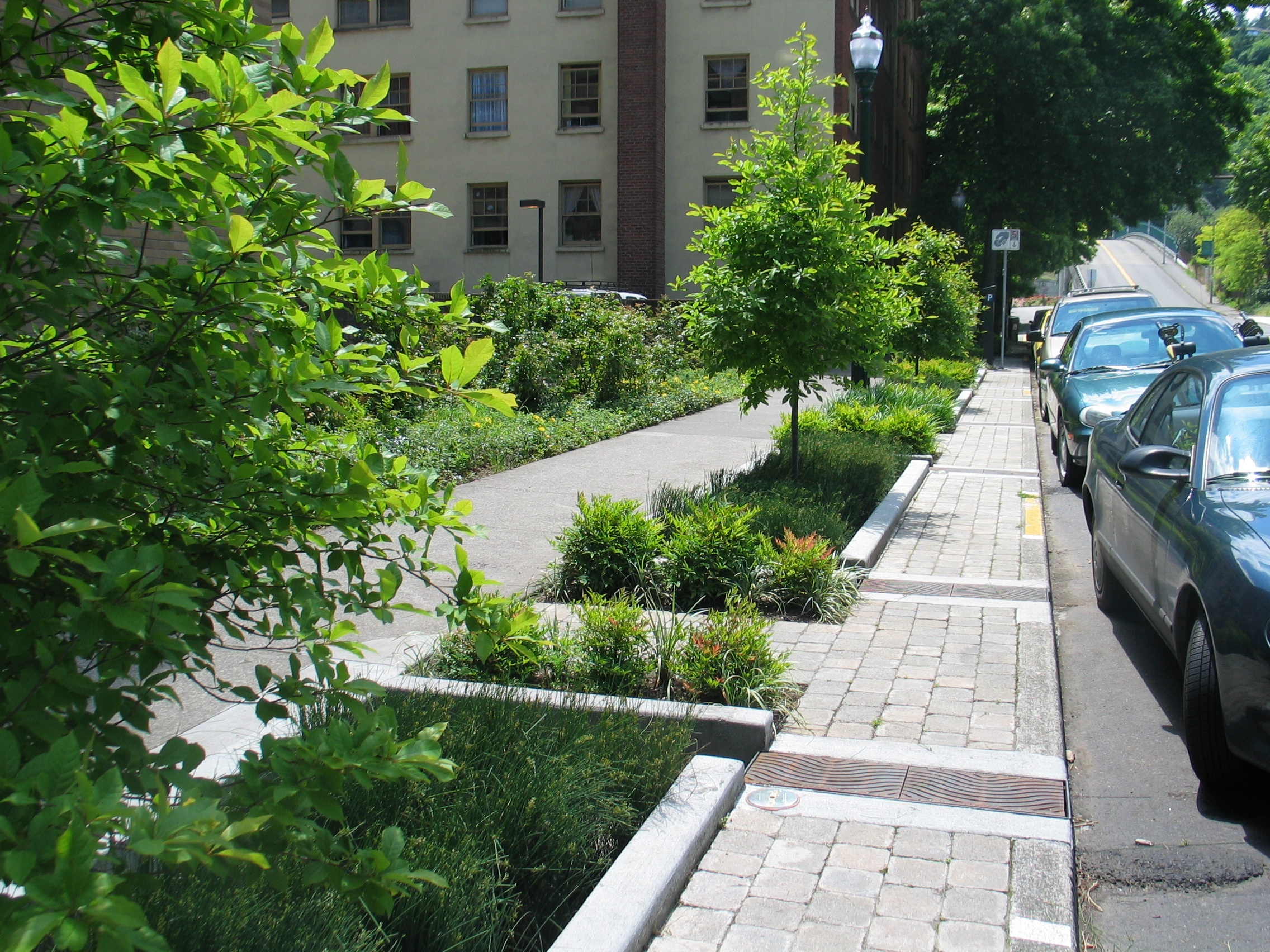New Jersey Future Blog
Design Professionals Walk Away With Practical Green Infrastructure Insights
June 24th, 2016 by Kandyce Perry

Participants, led by Princeton Hydro’s Geoff Goll (center), gather to take a look at green infrastructure installations at NJM Insurance Group’s Hammonton campus during the May 24th workshop for design professionals.
As part of New Jersey Future’s effort to mainstream green infrastructure across the state, two workshops for design professionals were conducted, rounding out the workshop series. (See a recap on the workshop for municipal leaders here.) Attendees included municipal and consulting engineers, architects and landscape architects who design and/or review stormwater management systems. Ten firms, one municipality, one county, the New Jersey Department of Transportation and the Pinelands Commission were represented at the Pinelands region workshop and eight design firms, two municipalities, four counties, the New Jersey Department of Transportation, and the Highlands Council were represented at the workshop in northwest New Jersey.
The goal for these workshops was to educate design professionals about various types of green infrastructure and where and how they can be used to improve water quality and supply, as well as to address other community goals including reducing flooding and enhancing public spaces.
Simple changes, big benefits
The first workshop, on May 24 at NJM Insurance Group’s Hammonton campus, was conducted in partnership with the Pinelands Preservation Alliance and was led by Stephen Souza and Clay Emerson, both of Princeton Hydro. They described green infrastructure design, construction, and maintenance (presentation), illustrated by case studies and ways to address common concerns (presentation). Presentations were followed by a panel discussion among Souza; Emerson; Michael Sullivan, a landscape architect and planner at Clarke Caton Hintz; and Brian Szura, an environmental specialist at the Pinelands Commission. Among the panelists’ key responses to audience questions:
- Towns can raise the bar. Changes to stormwater ordinances and internal review processes can facilitate green infrastructure. Training for municipal officials, reviewing engineers and board members is important.
- Talk things through to avoid missteps. Communication among engineers, landscape architects and contractors is imperative – both before and during construction. The design engineer should be on site during construction.
- Expect periodic maintenance. Costs to rejuvenate and restore a system once a decade, for example, are much lower than the cost to rebuild a system that was installed improperly.
The Hammonton workshop finished with a tour, led by Geoffrey Goll of Princeton Hydro, of the green infrastructure installations at the NJM Hammonton campus. The tour provided attendees the opportunity to see successful green infrastructure techniques including bioinfiltration basins, parking lot islands, a wetland basin, and an underground cistern; to ask questions about design and maintenance; and to engage informally with other participants.
Different venue, additional insights
The second workshop, on May 26 at Centenary University in Hackettstown, was led by Michele Adams, president of Meliora Design, and Tavis Dockwiller, cofounder of Viridian Landscape Studio.
This workshop began with a presentation explaining green infrastructure design and policy and providing case studies and correcting green infrastructure misconceptions. The workshop moved to an interactive breakout session where workshop participants discussed key issues and reported back.
Observations from the breakout groups included:
- As was the case with green building, green infrastructure education takes time. Continued outreach and education, as well as documented, visible green infrastructure successes are moving it to the mainstream
- Practitioners should talk to the Highlands Council about a proposed green infrastructure project before it is designed. The council supports green infrastructure and would like to see more installations; pre-installation meetings will likely help a project to get a quicker and more favorable review.
- Design professionals can volunteer for committee/board positions in their own municipalities and provide expertise and leadership where they live.
In both workshops, the topic of obstacles was raised. Obstacles to green infrastructure exist, but so do shared objectives. Engineers are interested in working in a constructive way with towns and the state Department of Environmental Protection to make more and better use of green infrastructure.
New Jersey Future is working with three pilot towns to help identify green infrastructure opportunities, accelerate local demonstration projects and effect improvements to stormwater and land use ordinances to facilitate the implementation, and incentivize the use, of green infrastructure. Towns and design professionals who participated in the workshop series and indicated interest through a follow-up survey will receive a set of ordinance improvement recommendations. All four green infrastructure workshops are a product of New Jersey Future’s Mainstreaming Green Infrastructure program, which aims to make green infrastructure the first choice for stormwater management in New Jersey.
















